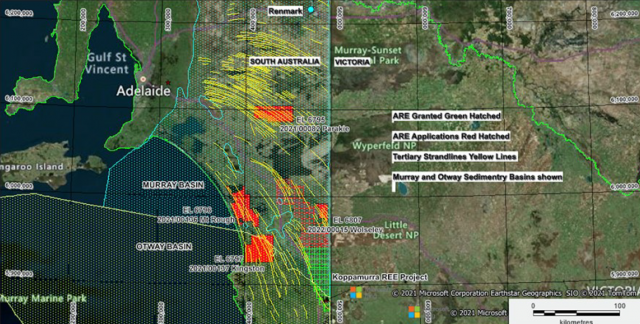By Elisabeth Champion
Australian exploration company Ausmon will begin exploration for rare earths in the south-east, following the granting of four licences by the South Australian Government.
The company will be the second to explore the region for rare earths, with Australian Rare Earths currently undergoing exploration at Koppamurra.
Ausmon has been granted four, six-year licences to undertake the exploration, but chief geoscientist for Ausmon chief geoscientist Mark Derriman said the impact in the region, would be minimal at this stage.
“Initially what we will do is drill on the roadside verges, so we don’t disrupt people’s farms or pastoral properties, we do a dial before you dig so we know if there is any infrastructure,“ he said.
“We drill a hole on that verge between the road and the private property, we will have witches hats up to manage traffic flow, and we drill 10 to 15 metre depth holes.
“The material goes to a lab to analyse for the rare earths and then we move on – each hole will only take us five minutes to drill, and once we finish we fill the hole up and you’d never even know we were there.
“It doesn’t use any fluids, it just goes through the soft material, gives us a sample and we move on and then we will use that to evaluate what we do next.“
He said the results of the exploration would determine whether there would be further exploration or mining on the future.
Mr Derriman said rare earths were needed in order to manufacture many of the technologies we rely on now and in the future.
“We are looking for the minerals that will power the future,“ he said.
“A lot of these new technologies, be it wind turbines, electric cars, batteries or solar cells, they all require a variety of minerals – the rare earths, which is a group of four or five – and cobalt, lithium and graphite.
“These batteries and and technologies require a lot of this material.
“We haven’t got a lot of this in Australia, the industry is tied up 95 per cent by China, but we have some rare earth mines in WA, which are quite high grade.
“A lot of companies are now exploring for these minerals that we will need going forward, so if we have enough abundance of them, we can produce some of this technology in the country rather than buying it in.
“We need that stuff and if we are to be self-sufficient in some of the technologies people are touting we will need by 2030 or 2040, then we need to start finding that now, because up until now we didn’t need that sort of material, because we weren’t producing as many things that needed batteries before.“
The exploration is expected to start later this year.








